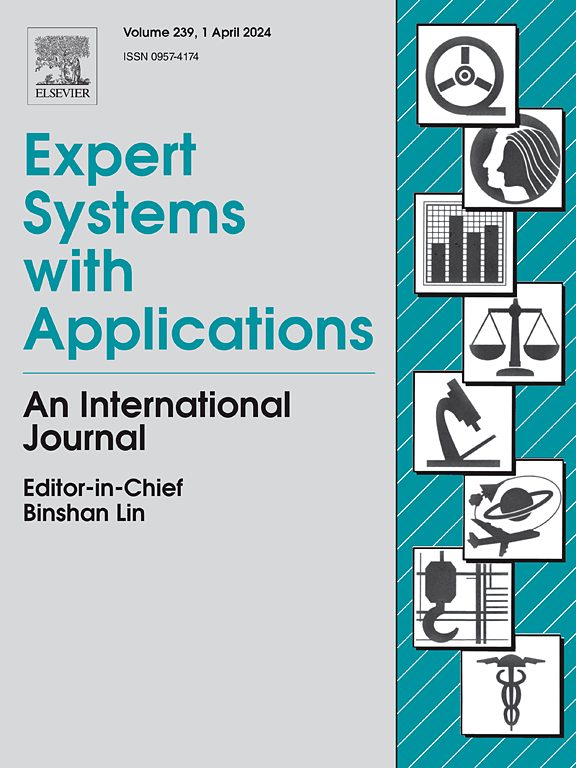Multi-condition milling cutter wear prediction based on split-channel information re-fusion and domain adaptation
IF 7.5
1区 计算机科学
Q1 COMPUTER SCIENCE, ARTIFICIAL INTELLIGENCE
引用次数: 0
Abstract
Accurate tool wear prediction is crucial for ensuring superior quality and operational efficiency in cutting processes, avoiding part defects, and minimizing economic losses. However, due to variations in cutting parameters such as cutting speed, feed rate, and depth of cut under different working conditions, the collected sensor signals (e.g., current, acceleration, acoustic emission) exhibit significant differences in amplitude, spectral density, and temporal feature distribution. This results in a distribution shift of the signal data, making it difficult for traditional models to generalize across multiple working conditions and leading to a notable decline in prediction performance. As a result, traditional models struggle to adapt to these changes and fail to capture wear patterns under diverse conditions, leading to low prediction accuracy across varying working scenarios. Therefore, a multi-condition wear prediction method for the milling cutter is proposed in this paper. This method is based on split-channel information re-fusion and domain adaptation, utilizing cutting signal and machining process data. A split-channel information re-fusion module is proposed to align the spatial wear feature distribution across different working conditions. The module first separates the multidimensional cutting signal and processes data along channel directions. Then, different convolutions for heterogeneous feature extraction are applied, and the multidimensional correlated features along the channels are fused for re-extraction. This process ensures that the diverse working condition features are fully captured and aligned. Moreover, the Mamba is improved due to the inconsistent distribution of temporal wear features under different working conditions. Furthermore, the GLMamba is constructed to fuse global–local attention in parallel configuration with selective state space models (SSMs). The loss of local information during the global compression of the selective SSMs is avoided by updating global information with local information features, ensuring accurate temporal feature extraction and alignment. The Maximum Mean Discrepancy (MMD) algorithm is utilized to quantify the distributional differences between domains in the fully connected layer, aligning feature distributions between the source and target domains. Experimental results on the NASA and Nanjing University of Aeronautics and Astronautics (NUAA) datasets demonstrate that the proposed method achieves significant performance advantages under various working conditions. Specifically, the average RMSE and MAE on the NASA dataset are reduced to 0.0311 mm and 0.0253 mm, respectively, while on the NUAA dataset they are reduced to 0.0058 mm and 0.00425 mm, outperforming several mainstream benchmark models. This study provides a novel solution for predicting milling cutter wear under various working conditions.
基于分路信息再融合和域自适应的多工况铣刀磨损预测
准确的刀具磨损预测对于确保切削过程中的卓越质量和操作效率,避免零件缺陷和最大限度地减少经济损失至关重要。然而,由于不同工况下切削速度、进给速率、切削深度等切削参数的变化,采集到的传感器信号(如电流、加速度、声发射)在振幅、频谱密度、时间特征分布等方面存在显著差异。这导致信号数据的分布移位,使得传统模型难以在多个工况下进行泛化,导致预测性能明显下降。因此,传统模型难以适应这些变化,无法捕捉不同条件下的磨损模式,导致在不同工作场景下的预测精度较低。为此,本文提出了一种铣刀多工况磨损预测方法。该方法基于分路信息再融合和领域自适应,利用切削信号和加工过程数据。提出了一种分通道信息再融合模块,对不同工况下的空间磨损特征分布进行对齐。该模块首先分离多维切割信号并沿通道方向处理数据。然后,采用不同的卷积进行异构特征提取,并融合通道沿线的多维相关特征进行重新提取;这个过程确保了不同的工作条件特征被完全捕获和对齐。此外,由于在不同的工作条件下,时间磨损特征的分布不一致,曼巴得到了改进。此外,构建了GLMamba,将全局-局部注意力与选择性状态空间模型(ssm)融合在并行配置中。通过用局部信息特征更新全局信息,避免了选择性ssm在全局压缩过程中局部信息的丢失,保证了时间特征的准确提取和对齐。利用最大平均差异(MMD)算法量化全连通层域间的分布差异,对齐源域和目标域之间的特征分布。在NASA和南京航空航天大学(NUAA)数据集上的实验结果表明,该方法在各种工况下都具有显著的性能优势。具体而言,NASA数据集的平均RMSE和MAE分别降至0.0311 mm和0.0253 mm,而NUAA数据集的平均RMSE和MAE分别降至0.0058 mm和0.00425 mm,优于几种主流基准模型。该研究为铣刀在各种工况下的磨损预测提供了一种新的解决方案。
本文章由计算机程序翻译,如有差异,请以英文原文为准。
求助全文
约1分钟内获得全文
求助全文
来源期刊

Expert Systems with Applications
工程技术-工程:电子与电气
CiteScore
13.80
自引率
10.60%
发文量
2045
审稿时长
8.7 months
期刊介绍:
Expert Systems With Applications is an international journal dedicated to the exchange of information on expert and intelligent systems used globally in industry, government, and universities. The journal emphasizes original papers covering the design, development, testing, implementation, and management of these systems, offering practical guidelines. It spans various sectors such as finance, engineering, marketing, law, project management, information management, medicine, and more. The journal also welcomes papers on multi-agent systems, knowledge management, neural networks, knowledge discovery, data mining, and other related areas, excluding applications to military/defense systems.
 求助内容:
求助内容: 应助结果提醒方式:
应助结果提醒方式:


